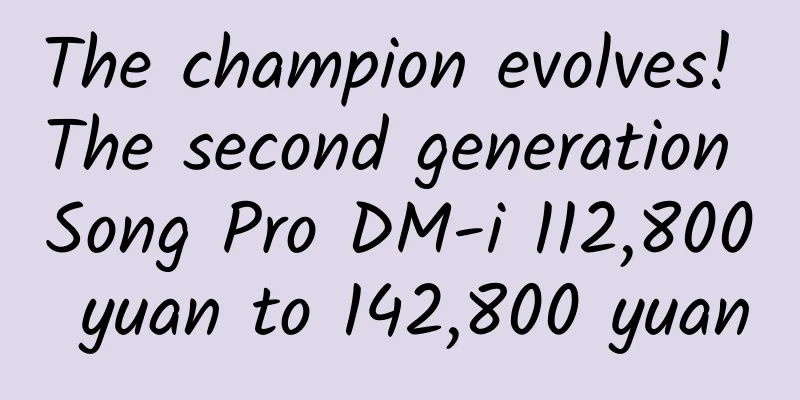Many manufacturers are working on multi-core, multi-mode and multi-frequency: Qualcomm is in danger

|
After the opening of 4G, with the advancement of China Mobile's five-mode chip strategy, domestic chip manufacturers have realized that in order to dominate the chip market, they must make a difference in multi-core, multi-mode and multi-frequency. At present, many domestic manufacturers have made great efforts to develop multi-core, multi-mode and multi-frequency chips, aiming to break the monopoly of Qualcomm, but it is estimated that the real competition among multiple manufacturers will not be formed until 2015. There is a demand for multi-core, multi-mode and multi-frequency With the issuance of 4G licenses by China Mobile, the domestic 4G market is accelerating. The curtain of the 4G competition has been opened, and mobile phone chip manufacturers are gearing up to use all their tricks, all wanting to grab more shares in this huge market cake with their own technical advantages. It is understood that at present, different countries have different frequency bands in multi-mode frequency bands. This leads to high requirements for the technology of terminal equipment on the one hand, due to the need to support multiple modes and frequency bands of LTE, 2G and 3G, and the need to support nearly 17 different frequency bands; on the other hand, how to coordinate the resources between frequency bands between different countries and regions. "Regarding multi-mode and multi-frequency, the industry generally believes that the lack of unified frequency bands is the biggest obstacle to the design of global LTE terminals today. Currently, the diversity of global 2G, 3G and 4G LTE network frequency bands poses a challenge to mobile terminal development. Global 2G and 3G technologies each use 4 to 5 different frequency bands, and with 4G LTE, the total number of network frequency bands is nearly 40." A Qualcomm official said. In addition, the support for multiple technical parameters, the backward compatibility of technology, and the reduction of power consumption and chip area are all challenges that chip manufacturers have to deal with. For example, LTE technology requires chip products to support different frequency bands to meet the needs of LTE network standards and frequency bands in different countries and regions. Domestic manufacturers are entering the multi-core multi-mode chip market. The RF360 front-end solution launched by Qualcomm at the QRD (Qualcomm Reference Design) Summit is the first to achieve the design of a single terminal supporting all LTE standards and frequency bands, supporting seven network standards (FDD, TD-LTE, WCDMA, EV-DO, CDMA 1x, TD-SCDMA and GSM/EDGE). Although multi-mode and multi-frequency may not be the real demand of most consumers, mobile phone chip manufacturers will support it in future chips for cost considerations. Qualcomm is currently the only one. With the entry of Huawei HiSilicon, MediaTek, Spreadtrum, and Chongqing University of Posts and Telecommunications in 2014, market competition will gradually become reasonable, breaking the monopoly of Qualcomm. However, it is estimated that the real competition among multiple companies will not be formed until 2015. In March, Leadcore launched the LC1860 LTE SoC smartphone chip, which uses a 28nm process technology and fully covers the five modes of TD-LTE/LTE FDD/TD-SCDMA/WCDMA/GGE, supporting global roaming. In February this year, MediaTek launched the world's first true octa-core 4G LTE mobile phone solution MT6595. In addition to supporting FDD-LTE and TD-LTE at the same time, it also supports DCDC-HSPA + (42Mbits/s), TD-SCDMA, EDGE and GSM/GPRS voice and data communications. Its multi-mode stable compatibility allows its terminal products to seamlessly connect and roam around the world. "Nuclear" war is about to take place Compared with multi-mode and multi-frequency, multi-core technology is undoubtedly the most effective and direct driving force of chips. From single-core to dual-core, from quad-core to octa-core, terminal chips are constantly undergoing "nuclear" evolution. And each nuclear evolution follows Moore's Law, and the 28nm process of processors is no longer a bottleneck. The continuous evolution of TD/LTE and the continuous growth of the smart terminal market are triggering a new round of "nuclear" war. The latest octa-core smartphone chip Kirin920 (HiSilicon Kirin 920) released by Huawei's chip company HiSilicon is said to be the top chip currently produced by domestic chip manufacturers. The outside world generally believes that Kirin920 is powerful and may be able to compete with Qualcomm Snapdragon 805. Qualcomm 805 uses the Krait 450 quad-core architecture, with a single-core maximum frequency of up to 2.7GHZ, while HiSilicon Kirin 920 uses four 1.7-2.0GHz Cortex-A15s and four 1.3-1.6GHz Cortex-A7s, which can assign tasks to each core according to the needs of various applications, and can support up to eight cores running simultaneously. Although the single-core frequency is not as good as Krait 450, after all, "there is strength in numbers", and its performance is roughly the same as Krait 450. MediaTek's MT6595 platform uses a quad-core Cortex-A17 and a large and small core solution of a quad-core Cortex-A7. Officials say it supports eight cores being turned on simultaneously and supports ultra-high-definition H.265 video codec specifications. Cortex-A17 is the latest quad-core solution released by ARM in February this year, and its performance is also greatly improved compared to A15. The second-generation LTE multi-mode baseband chip "Chitu 8320" newly launched by Chongqing Post and Information Technology Co., Ltd. supports LTE Category 4 peak data transmission rates of 150Mbps downlink and 50Mbps uplink, and supports TD-SCDMA HSPA+R8 version. The AP adopts the quad-core 1.4GHZ Cortex-A7 solution. Compared with similar products such as QcomMSM8926 and Marvell PXA1920, this AP processor solution has certain competitive advantages. As a winner of Toutiao's Qingyun Plan and Baijiahao's Bai+ Plan, the 2019 Baidu Digital Author of the Year, the Baijiahao's Most Popular Author in the Technology Field, the 2019 Sogou Technology and Culture Author, and the 2021 Baijiahao Quarterly Influential Creator, he has won many awards, including the 2013 Sohu Best Industry Media Person, the 2015 China New Media Entrepreneurship Competition Beijing Third Place, the 2015 Guangmang Experience Award, the 2015 China New Media Entrepreneurship Competition Finals Third Place, and the 2018 Baidu Dynamic Annual Powerful Celebrity. |
<<: Why can sausage cucumber operate touch screen?
Recommend
This drone-shot video is a bit scary
The Verge editor Ben Popper recently received an ...
Analysis of ideas and steps for writing online promotion plans
Internet promotion, a promotion method that requi...
Tablet market is a mixed bag: iPad downturn and China's rise
Although Apple's iPad sales have declined for ...
Anqing SEO Training: Do visitor preferences affect visit rate? How does SEO grasp visitor preferences?
A good website is undoubtedly the hard work of ma...
Distraction: The unexpected benefits
© Behance Leviathan Press: Mind-wandering, also k...
Traffic doesn’t work? Member Economy to help you
"Prime has become the central nervous system...
Birds called "stupid birds" are actually very smart | Nature Trumpet
Welcome to the 77th issue of the Nature Trumpet c...
Science illustration | How to protect "underwater grasslands" that bloom and bear fruit in seawater?
...
What exactly is a magnetic storm, and why can it destroy Musk’s 40 satellites at once?
According to reports by CNN and Reuters on Februa...
In Praise of the Independent Programmer
[[149946]] Parkinson’s Theorem[1] tells us that “...
8,000-word article reviewing the development of the short video industry
In 2020, short videos will undoubtedly still stan...
How can a newbie to do short video live streaming build a professional account?
Many people want to do short video live streaming...
Seeing too much, China's Sky Eye poses a problem for scientists
"The main challenge facing the China Sky Eye...
As panel manufacturers have turned losses into profits, are good days coming for TV companies?
Unlike the TV industry, which has been in deep tr...









